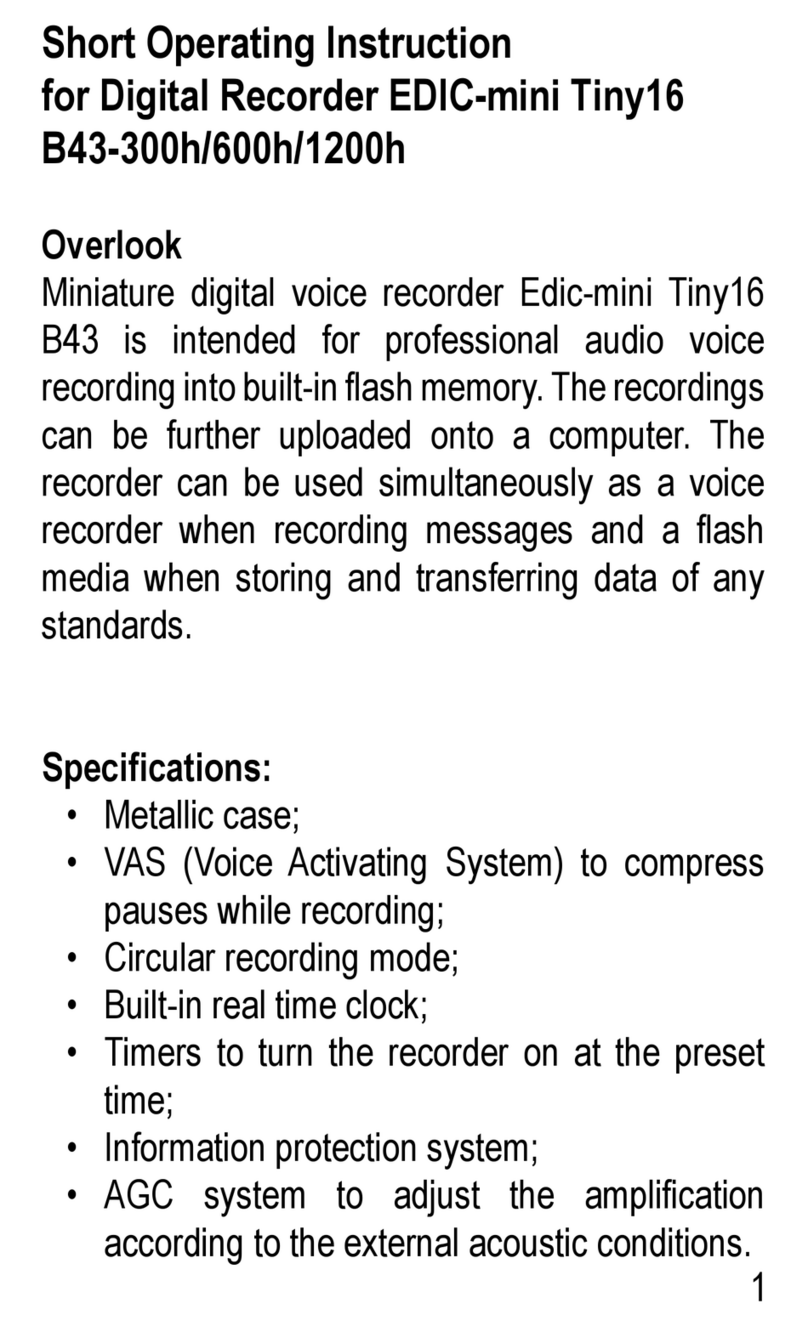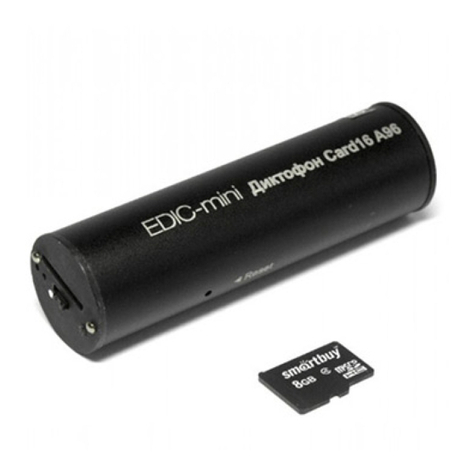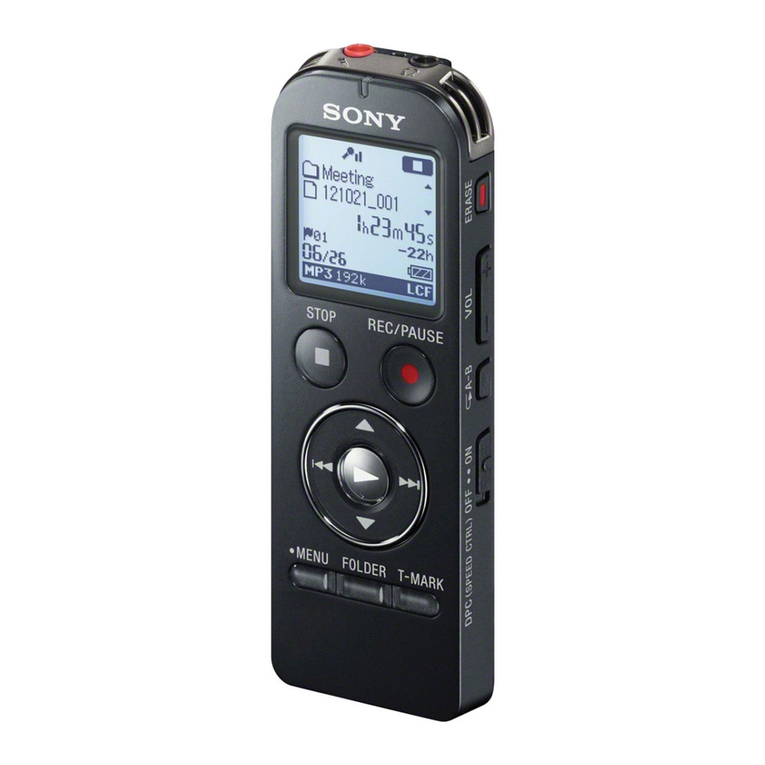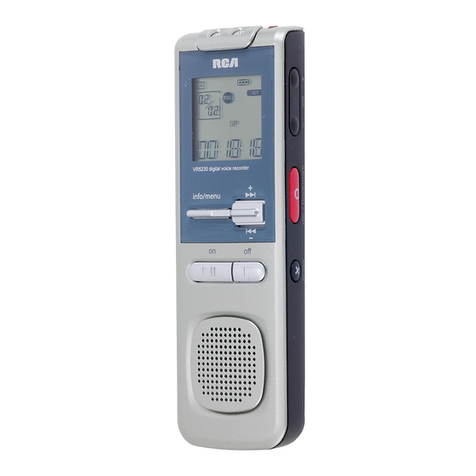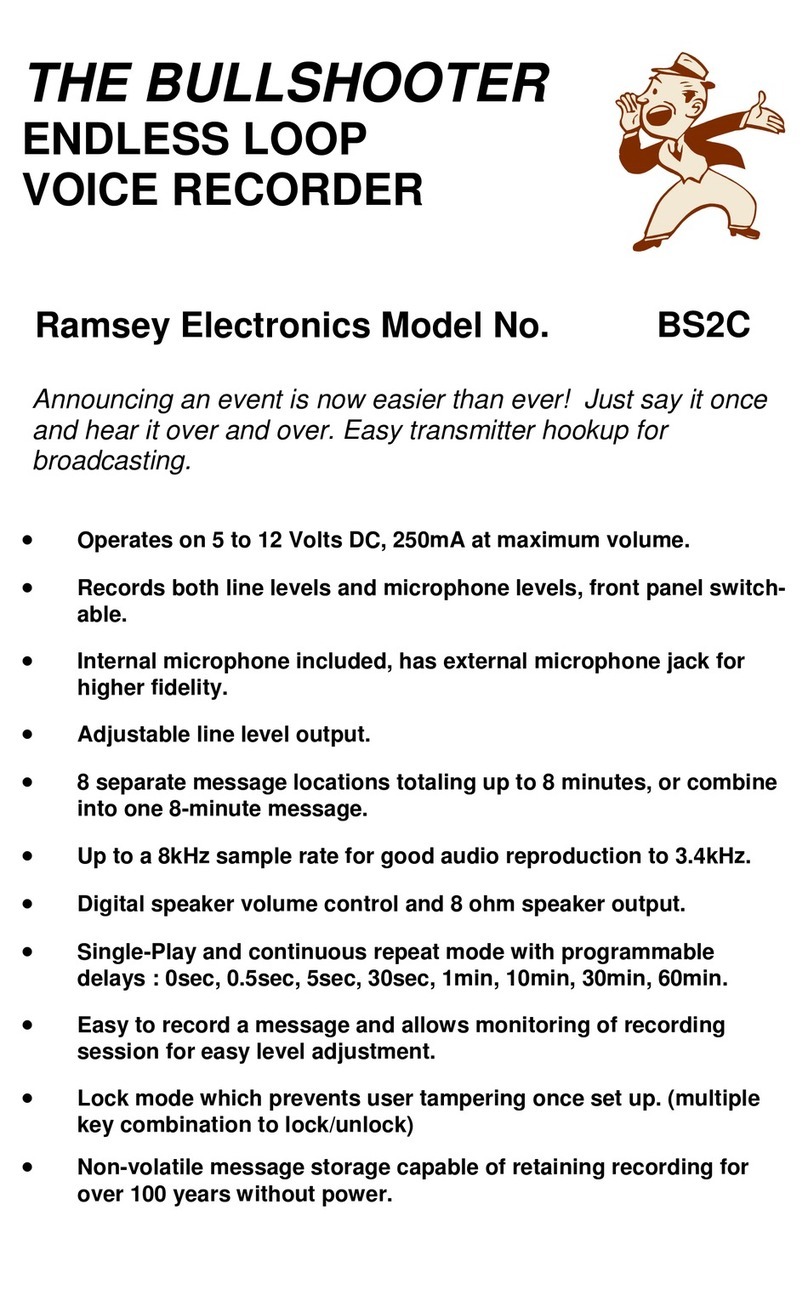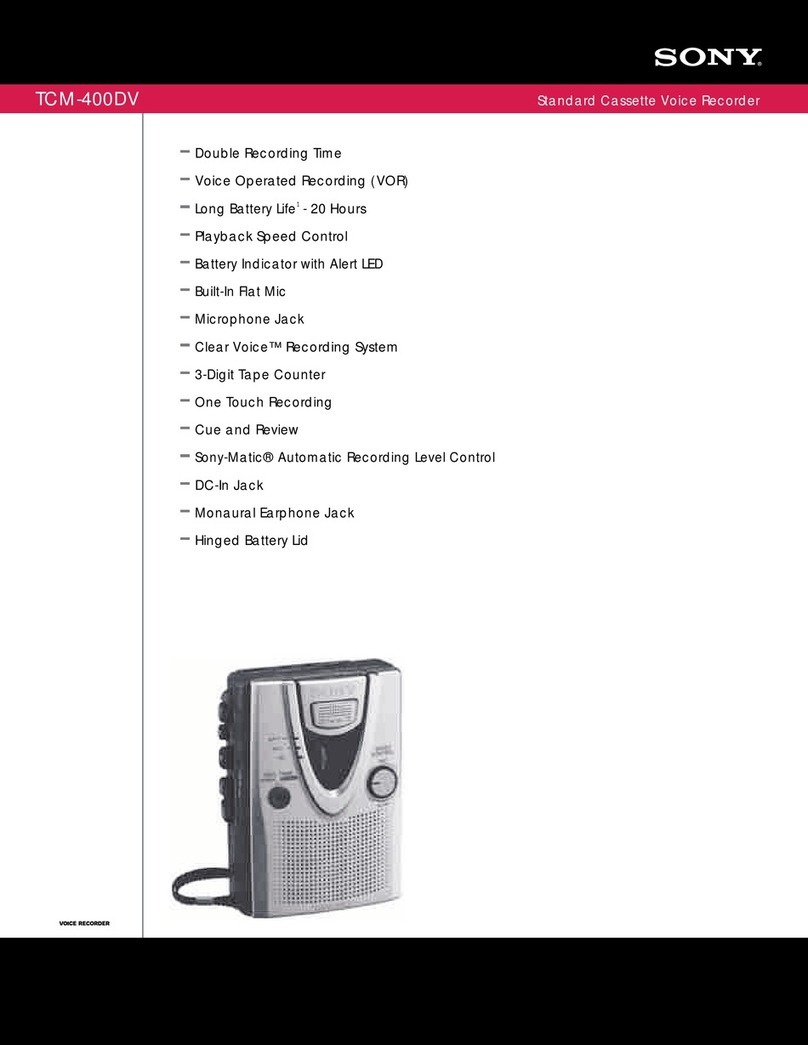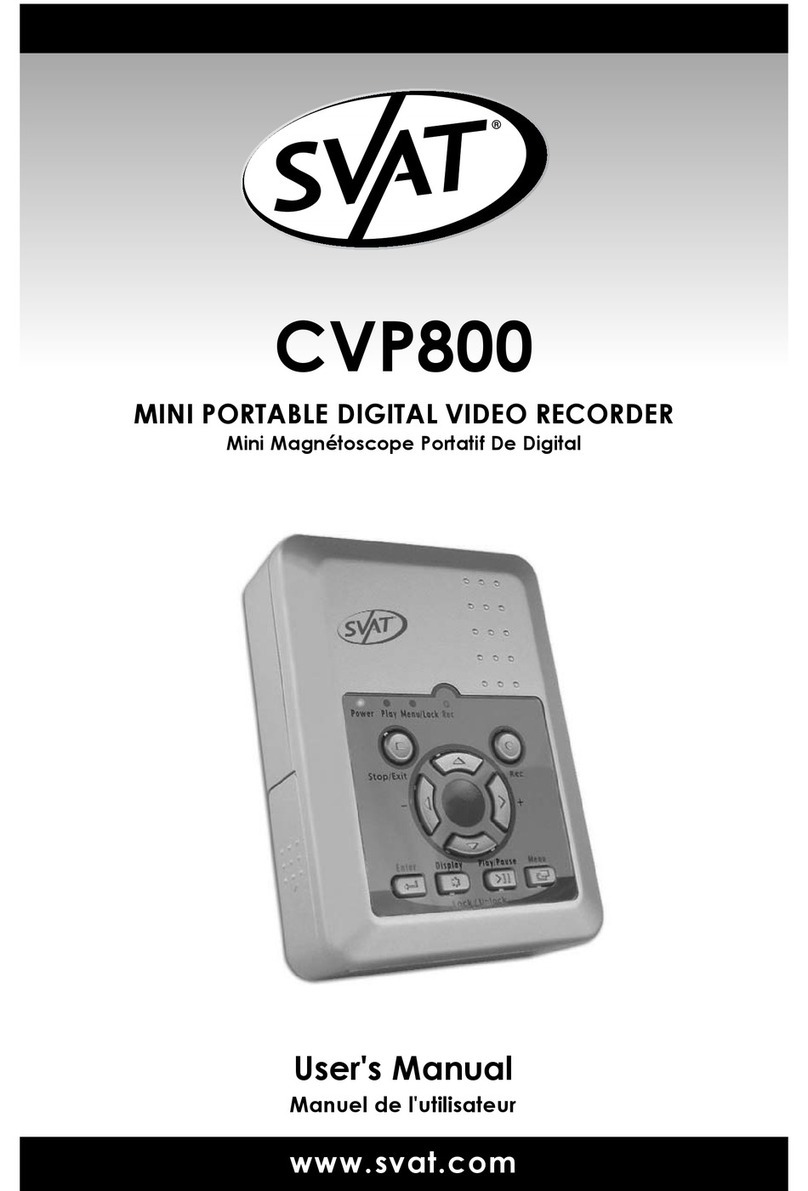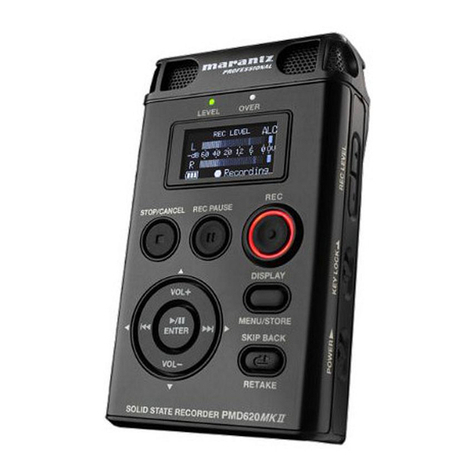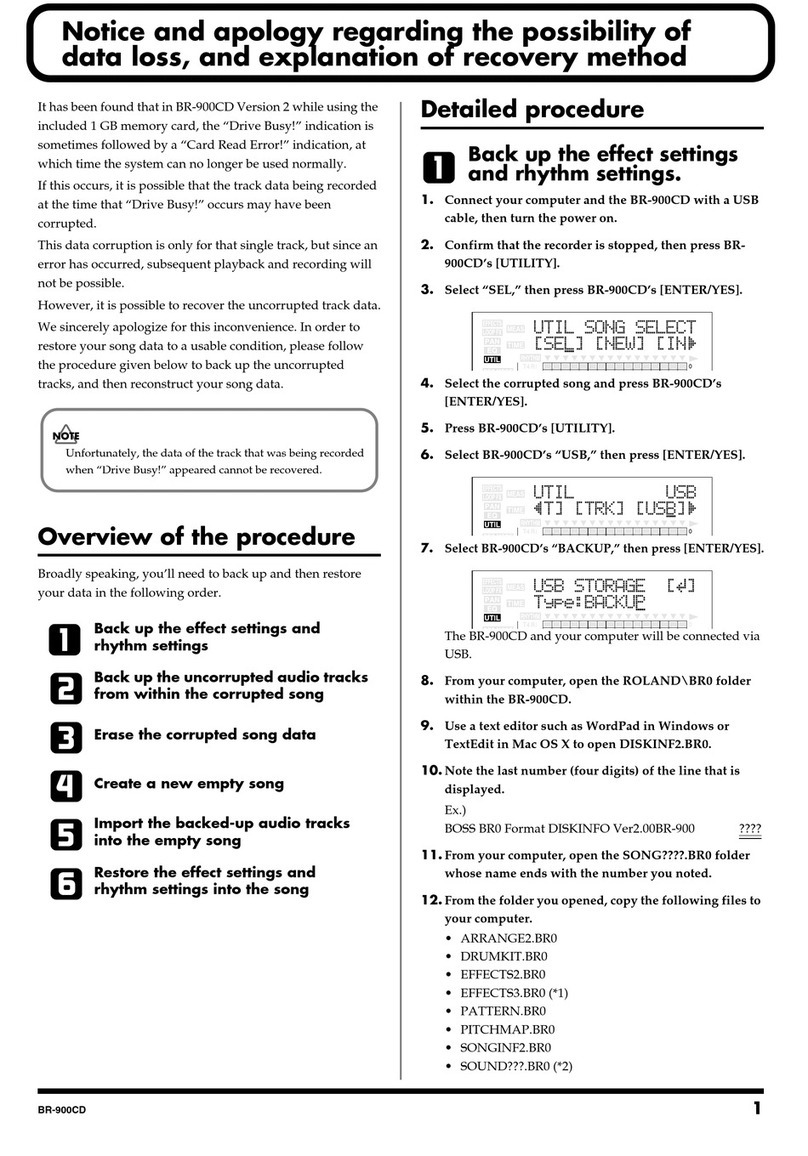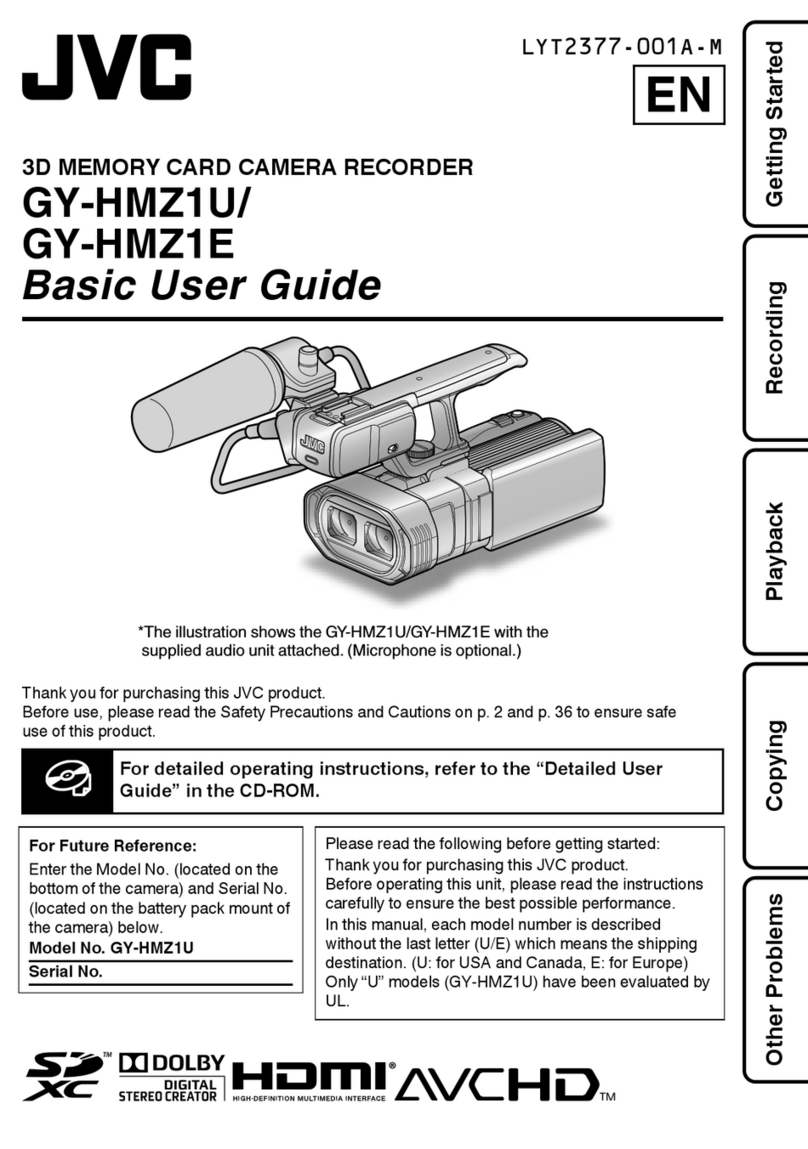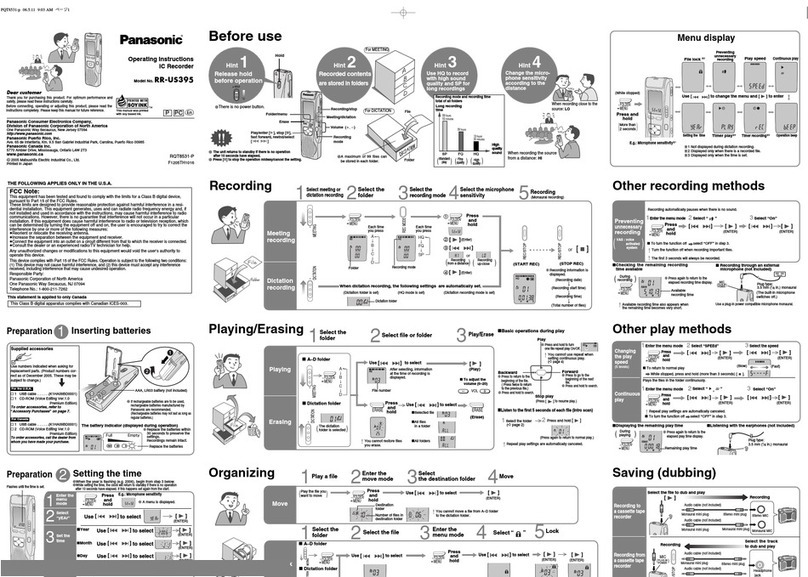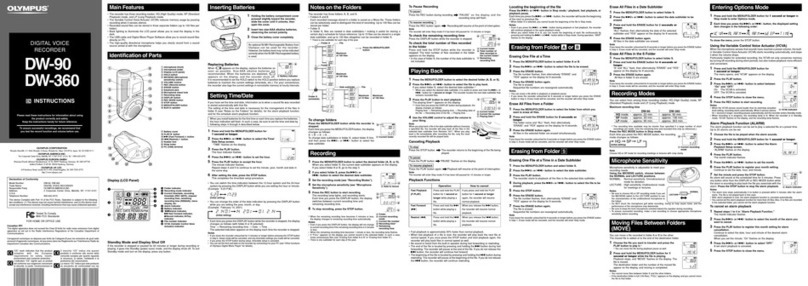+33 4 7642 9550 www.aaton.com Cantar-X User Manual v2.26 (r13) 2009 April 27
p.3
p.3
User manual
The latest User Manual is on: http://www.aaton.com/prod-
ucts/sound/cantar/usermanual.php ; to read it on iPhones,
use FileMagnet: http://magnetismstudios.com/FileMagnet
Note: iPhone v2.2.1 supports all PDF's.
Software
Cantar, Arcan, Tarkan, Majax software can be download-
ed from: http://www.soft.aaton.com/swcantar/
• first visit: click 'create an account', enter your details,
don't forget the country. After a few seconds, you will
receive an email with your password. Enter this password
with your email address in the login page.
• next visits: forgotten password? Click 'lost password',
it will be sent to your email address.
Cantar software is accessible to registered owners only; beta
versions are not to be used for commercial assignments.
Cantar Users' Group
Exchange tips with other cantarists:
http://ulysse.aaton.com/cgi-bin/mailman/listinfo/cantar-users
Pictures on the road
Send us your 'Cantar at work' pictures, we will put the best
ones on the gallery: http://www.aaton.com/gallery/
Post Production helper
Spread the 'CantarPostChain-26' tutorial around:
http://www.aaton.com/documentation/
KEEP IN TOUCH RELEASES
From Cantar-X1 to X2
All Cantar-X1s can be upgraded to X2s.
• The motherboard (CM-5) carries an FPGA (Field
Programmable Gate Array) with increased processing
power. • A-to-D converters (AD-5) provide nine audio delay
buffers (up to 85ms @ 48kHz). • An interface board (ET-1)
brings 100BaseT Ethernet through an RJ45 socket. X1 and
X2 use the same software but the following functions require
X2’s extra power: Rec&Play; DVD-RAM playback; Ethernet;
Differential analog input delays; AutoSlate on line-inputs and
tracks; Wordclock sync of multiple Cantars.
Ray M. Owen's last review: v2.26 (r11).
New Features –X1 & X2 +X2 only
v2.26 Feb. 2009 – Fat-32 formatting of CF cards. – Idle back-
up can be interrupted while saving T7T8 after a T1-T8 polyrotate.
–Mic3 master of Mic4 & Mic5. – Direct PLAY of the take preced-
ing a deleted one. – SoundReport generated once backup@call
is completed. +Tarkan v1.11 adds CSV to the PDF SoundReport.
+Tarkan completion menu fits WinXP netbook screens.
v2.24 Nov. 2008 –Windows PCs handle 'unmounted' internal
drive. – Simultaneous recording on a mix of internal - external,
P/ATA - S/ATA drives. –Line-in links for Soundfield ST350.
–PolyRotate by one or two ranks. –T8T8 backup. –False-start:
take-type 'n' keeps the take # for the next. –Trash a file/Revive
files in BROWSE. –Swift access to ROUTINGS with no PLAY/
BROWSE triggering. –Thumb -free check/select In-Grids and Out-
Maps. –All letters available for seq./scene. –Delayed IdleCopy
activation. –DVD-RAM exact backup space is displayed. – Erratic
behaviour following PDF creation, fixed. +Linking-Trios in the CSV
SoundReport. +Tarkan v1.09 brings pan-pot control, T7T8 set-
tings, metadata editing and PDF generation.
v2.15 March 2008 –In-Grids to T7T8 displayed with T1–T6
banks. –Mixdown (+T7) to T8. –Line-out/Foldback gain from
TEST. – 'So' monitoring of the mix in TEST, REC and PLAY: Xa
(center), Xb (center), Xa Xb (center), Xa Xb (left/right). –One hand
Solo/Filter adjust. –3sec. delay protection of limiters. –Storage of
project's sound-report headers with 'save setup'. –Clockwise jog
for time and operands.
v 2 .11 Jan. 2008 –Creation of 'play-cards' with cue in/out from
current and archive 'play-files'. +Rec&Play plays up to eight tracks
from int. or ext. HDD, w/ nine analog inputs while recording eight
tracks on the int. HDD. +Remix of a recording with dynamic
mixdown and addition of a commentary. +ADR for 'hear it, say it'
dialog correction. +Up to eight track incremental re-recording.
v2.06 Dec. 2007 –Talkback mic sent to line-out and/or fold-
back left (e.g. boom) or right (e.g. director). –Double beep at REC
stop. –Two PDF Sound-Reports (ALL for 't p w a n' & WILD for
'w' takes). –ALE and CSV lists added to backups. +Up to 85ms
delay on analog inputs; differential alignment and TC compen-
sation. +Wordclock-sync at 48/96kHz (±0.1%) and 44.1kHz.
+Autoslate detection on mic1–5, line1–4 and track1–8.
v1.87 June 2007 –'Remote Roll' recording starts upon receiv-
ing running LTC, and stops upon receiving frozen LTC (no TC
overlaps, no interruption on RF transmission drop-outs). –Remote
STOP, TEST, PPR and REC. –Line-out & foldback levels controlled
by CantaRem.
